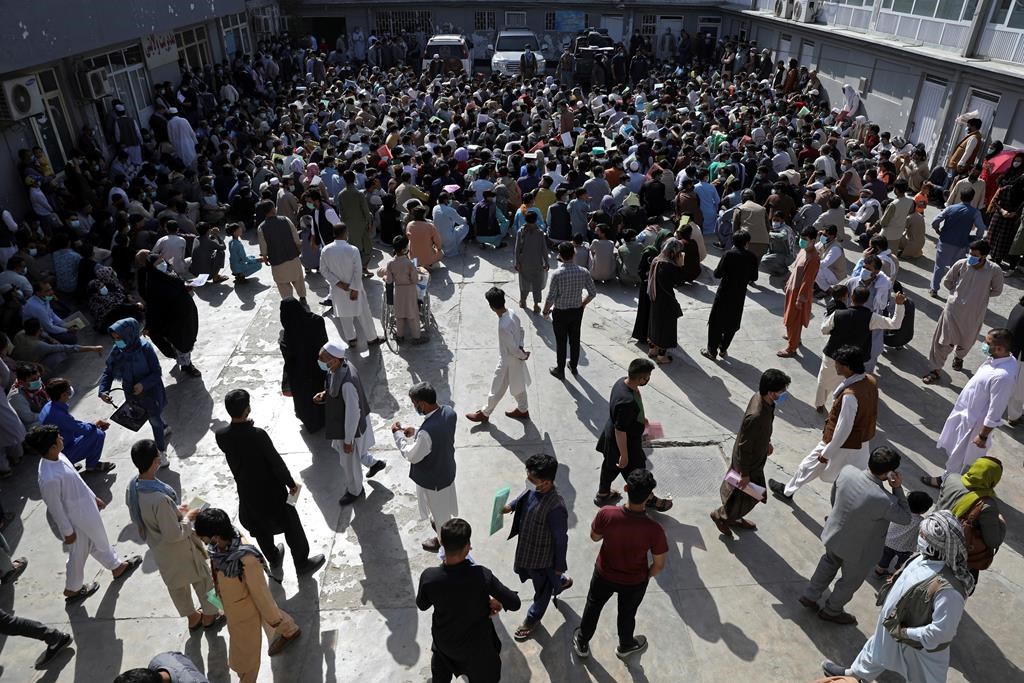Ottawa will continue sending humanitarian and development assistance to Afghanistan after the United States completes its troop withdrawal from the country next month, International Development Minister Karina Gould says.
U.S. President Joe Biden said last week the U.S. military operation in Afghanistan will end Aug. 31, nearly 20 years after the United States and its allies took down the Taliban government in Kabul.
Biden pushed back against the notion the U.S. mission has failed but also noted it was unlikely the Afghan government would control all of Afghanistan after the U.S. leaves.
He urged the Afghan government and the Taliban, which he said remains as formidable as it did before the start of the war, to come to a peace agreement.
Gould said in an interview that Canada is constantly monitoring and evaluating the situation through dialogue with its partners including non-governmental organizations and United Nations agencies.
“At this point in time, our partners continue to work and deliver services for the Afghan people.”
She said Ottawa is providing humanitarian assistance to the Afghan people, as 50 per cent of Afghans rely on such help for basic necessities.
On Friday, the Taliban claimed it now controls 85 per cent of Afghanistan’s territory amid a surge in wins on the ground as American troops continue their pullout from the country.
The announcement came at a press conference at the end of a visit by a senior Taliban delegation to Moscow to offer assurances that the insurgents’ quick gains in Afghanistan do not threaten Russia or its allies in Central Asia.
The Taliban promised not to attack provincial capitals or seize them by force, and expressed hopes for a “political resolution” with Kabul.
Gould said she is concerned about the rise in attacks on humanitarian workers and the civilian population recently.
But she said it’s unlikely the Taliban is controlling 85 per cent of the country.
“Certainly they have made some gains, but it’s not, from our perspective, as large as what they are claiming,” she said. “They might be inflating their numbers when in actual fact they don’t control that amount of territory.”
Global Affairs Canada spokesman Grantly Franklin said Ottawa calls for a permanent and comprehensive ceasefire to end the interminable suffering of the Afghan people and facilitate provision of humanitarian assistance.
“Canada’s engagement in Afghanistan prioritizes peace, democracy and human rights,” he said in a statement.
According to government data, about 40,000 Canadians served in Afghanistan from 2001 to 2014, with Canada providing a total of $3.6 billion in aid to the country since 2001.
Canada’s efforts in Afghanistan have contributed to a real improvement in the lives of the most vulnerable, Franklin said. “Women and children in particular have better access to education, health and human rights, and Canada will do its utmost to preserve these gains.”
In November, Canada pledged $270 million in additional development assistance through 2024.
Roland Paris, director of the graduate school of public and international affairs at the University of Ottawa, said much of Canada’s assistance now goes to supporting the Afghan security forces and to development projects aimed at improving conditions for women and girls.
“Unfortunately, the women and girls that our development assistance has targeted are particularly vulnerable if the Taliban continues to spread its influencing control,” he said.
“It really depends on how the Taliban behaves, but its track record is not encouraging, to say the least.”
He said there’s very little Canada can do if the Taliban continues expanding its territory.
“Canada doesn’t have very much influence there,” he said. “If the U.S. and its allies were unable to gain control of the situation with 130,000 troops, how much can Canada do with zero troops on the ground?”
Ferry de Kerckhove, a former Canadian ambassador in Pakistan, Indonesia and Egypt, said Canada doesn’t have a real foreign policy in Afghanistan and can’t do anything about the U.S. withdrawal.
“I’m sorry to say it as a former Canadian diplomat, I think Canada doesn’t matter much in that ballgame.”
This report was first published by The Canadian Press on July 13, 2021.
— With files from The Associated Press.
—
This story was produced with the financial assistance of the Facebook and Canadian Press News Fellowship.
Maan Alhmidi, The Canadian Press
BAGHDAD (AP) — The death toll from a catastrophic hospital blaze in a city in southern Iraq the previous day rose to 58 on Tuesday, medical officials said.
Two health officials said that more than 100 people were also injured in the fire that torched the coronavirus ward of al-Hussein Teaching Hospital in the city of Nasiriyah on Monday.
Earlier, officials had said the fire was caused by an electric short circuit, but have not provided more details. Another official said the blaze erupted when an oxygen cylinder exploded. The officials spoke on condition of anonymity because they were not authorized to speak to journalists.
The new ward, opened just three months ago, contained 70 beds.
Prime Minister Mustafa al-Kadhimi chaired an emergency meeting in the wake of the fire and ordered the suspension and arrest of the health director in Dhi Qar province, where Nasiriyah is located, as well as the director of the hospital and the city’s director of civil defense. A government investigation was also launched.
It was the second time a large fire killed coronavirus patients in an Iraqi hospital this year. At least 82 people died at Ibn al-Khateeb hospital in Baghdad in April, when an oxygen tank exploded, sparking the blaze.
Qassim Abdul-zahra, The Associated Press
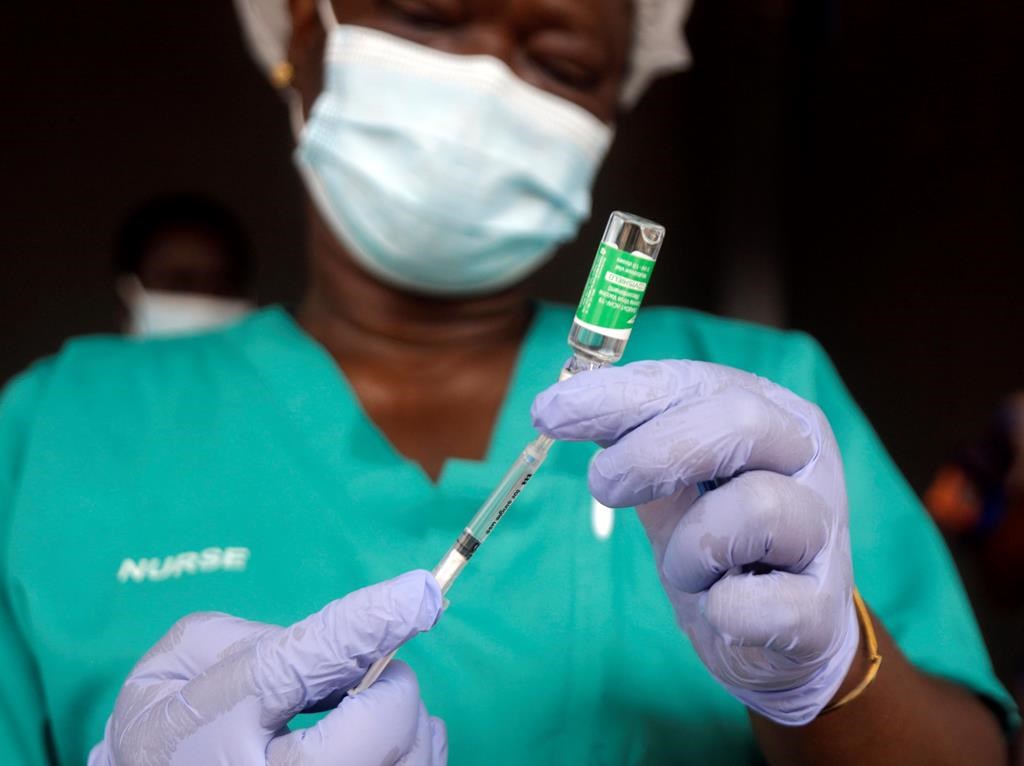
LONDON (AP) — After Dr. Ifeanyi Nsofor and his wife received two doses of AstraZeneca’s coronavirus vaccine in Nigeria, they assumed they would be free to travel this summer to a European destination of their choice. They were wrong.
The couple — and millions of other people who have been vaccinated through a U.N.-backed effort — could find themselves barred from entering many European and other countries because those nations don’t recognize the Indian-made version of the vaccine for travel.
Although AstraZeneca vaccine produced in Europe has been authorized by the continent’s drug regulatory agency, the same shot manufactured in India hasn’t been given the green light.
EU regulators said AstraZeneca hasn’t completed the necessary paperwork on the Indian factory, including details on its production practices and quality control standards.
But some experts describe the EU move as discriminatory and unscientific, pointing out that the World Health Organization has inspected and approved the factory. Health officials say the situation won’t only complicate travel and frustrate fragile economies but also undermine vaccine confidence by appearing to label some shots substandard.
As vaccination coverage rises across Europe and other rich countries, authorities anxious to salvage the summer tourism season are increasingly relaxing coronavirus border restrictions.
Earlier this month, the European Union introduced its digital COVID-19 certificate, which allows EU residents to move freely in the 27-nation bloc as long as they have been vaccinated with one of the four shots authorized by the European Medicines Agency, have a fresh negative test, or have proof they recently recovered from the virus.
While the U.S. and Britain remain largely closed to outside visitors, the EU certificate is seen as a potential model for travel in the COVID-19 era and a way to boost economies.
The officially EU-endorsed vaccines also include those made by Pfizer, Moderna and Johnson & Johnson. They don’t include the AstraZeneca shot made in India or many other vaccines used in developing countries, including those manufactured in China and Russia.
Individual EU countries are free to apply their own rules for travelers from inside and outside the bloc, and their rules vary widely, creating further confusion for tourists. Several EU countries, including Belgium, Germany and Switzerland, allow people to enter if they have had non-EU-endorsed vaccines; several others, including France and Italy, don’t.
For Nsofor, the realization he could be barred was “a rude awakening.” After a tough year of working during the pandemic in Abuja, Nsofor and his wife were looking forward to a European vacation with their two young daughters, perhaps admiring the Eiffel Tower in Paris or touring Salzburg in Austria.
Nsofor noted that the Indian-made vaccine he received had been authorized by WHO for emergency use and had been supplied through COVAX, the U.N.-backed program to provide shots to poor corners of the world. WHO’s approval included a visit to the Serum Institute of India factory to ensure that it had good manufacturing practices and that quality control standards were met.
“We’re grateful to the EU that they funded COVAX, but now they are essentially discriminating against a vaccine that they actively funded and promoted,” Nsofor said. “This will just give room to all kinds of conspiracy theories that the vaccines we’re getting in Africa are not as good as the ones they have for themselves in the West.”
Ivo Vlaev, a professor at Britain’s University of Warwick who advises the government on behavioral science during COVID-19, agreed that Western countries’ refusal to recognize vaccines used in poor countries could fuel mistrust.
“People who were already suspicious of vaccines will become even more suspicious,” Vlaev said. “They could also lose trust in public health messages from governments and be less willing to comply with COVID rules.”
Dr. Mesfin Teklu Tessema, director of health for the International Rescue Committee, said countries that have declined to recognize vaccines cleared by WHO are acting against the scientific evidence.
“Vaccines that have met WHO’s threshold should be accepted. Otherwise it looks like there’s an element of racism here,” he said.
WHO urged countries to recognize all of the vaccines it has authorized, including two Chinese-made ones. Countries that decline to do so are “undermining confidence in lifesaving vaccines that have already been shown to be safe and effective, affecting uptake of vaccines and potentially putting billions of people at risk,” the U.N. health agency said in a statement this month.
In June, the Serum Institute of India’s CEO, Adar Poonawalla, tweeted that he was concerned about vaccinated Indians facing problems traveling to the EU and said he was raising the problem at the highest levels with regulators and countries.
Stefan De Keersmaeker, a spokesman for the EU’s executive arm, said last week that regulators were obligated to check the production process at the Indian factory.
“We are not trying to create any doubts about this vaccine,” he said.
AstraZeneca said it only recently submitted the paperwork on the Indian factory to the EU drug regulatory agency. It didn’t say why it didn’t do so earlier, before the agency made its original decision in January.
Public health experts warned that countries that decline to recognize vaccines backed by WHO are complicating global efforts to safely restart travel.
“You can’t just cut off countries from the rest of the world indefinitely,” said Dr. Raghib Ali of the University of Cambridge. “To exclude some people from certain countries because of the vaccine they’ve received is wholly inconsistent because we know that these approved vaccines are extremely protective.”
Nsofor said he and his wife are still deciding where to take their summer vacation and are leaning toward Singapore or East Africa.
“I didn’t realize there were so many layers to vaccine inequity,” he said.
___
Jamey Keaten in Geneva, Angela Charlton in Paris, and Lorne Cook in Brussels, contributed to this report.
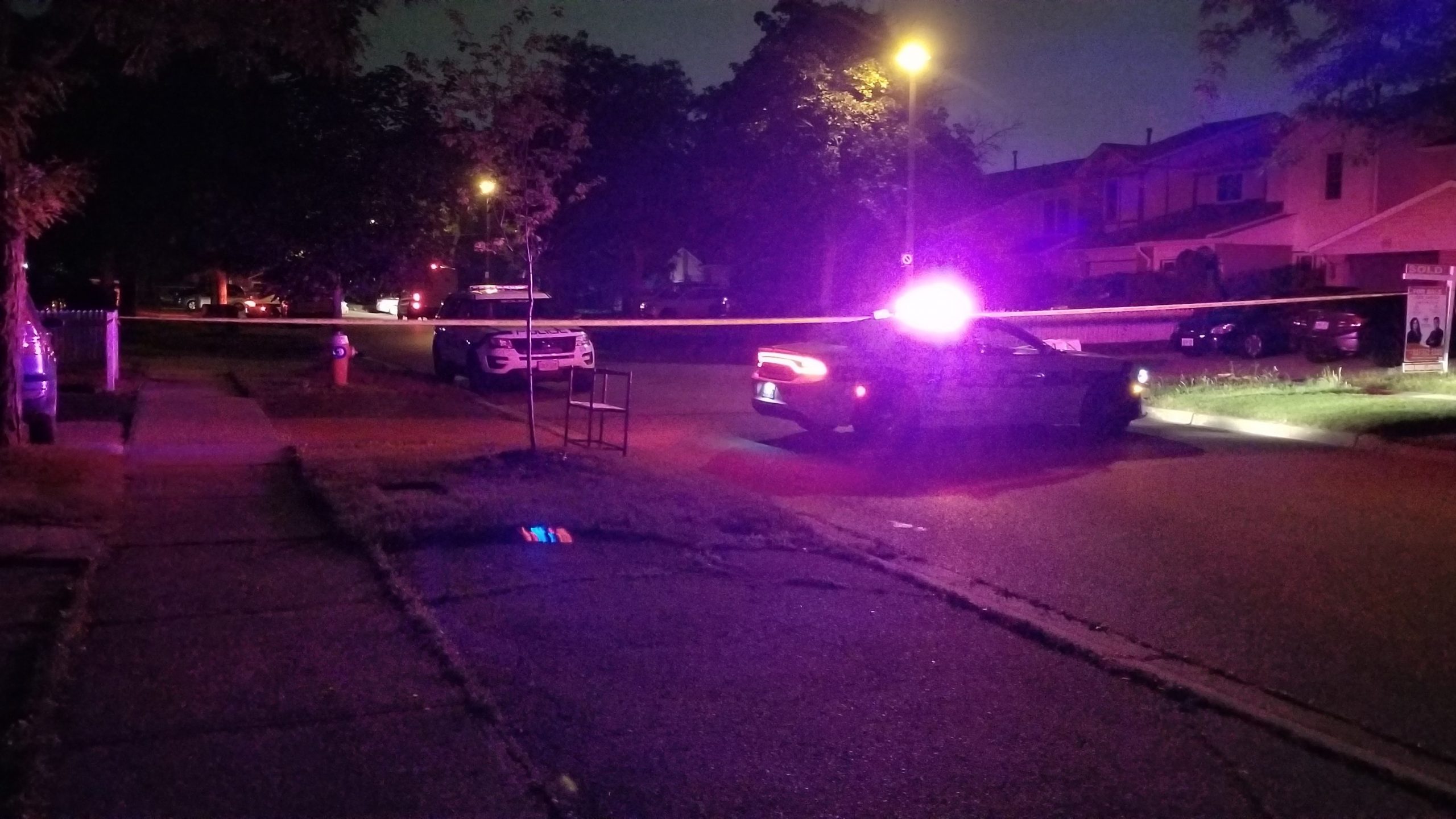
A baby has died after what police call a “deeply tragic accident” in Brampton overnight.
Emergency crews were called to the scene on Royal Salisbury Way, in the Williams Parkway and Highway 400 area, just after midnight on Monday.
Peel police said a one-year-old girl was on the driveway of a home when she was struck by a vehicle.
The baby was rushed to hospital with critical injuries where she later died.
Police believe a family member was behind the wheel of the car at the time.
No charges have been laid.
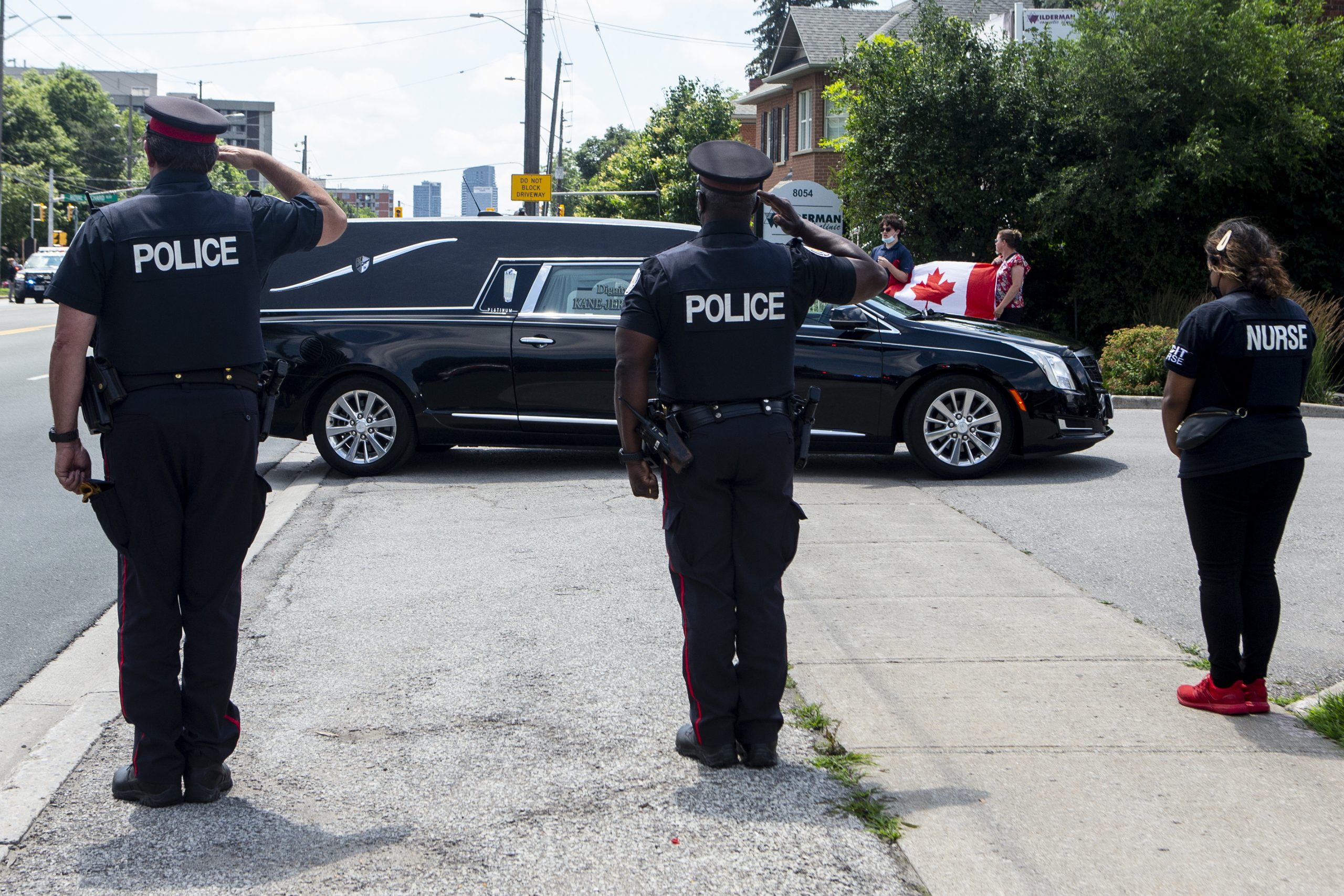
Mourners trickled into a funeral home north of Toronto Sunday to pay their last respects to a police officer who died in the line of duty.
The visitation for Const. Jeffrey Northrup at the Kane-Jerrett Funeral Home in Thornhill, Ont., was open to the public.
Ontario Premier Doug Ford and Toronto Mayor John Tory were among those who attended.
Emergency Task Force officers donning grey uniforms and vests also turned out to pay respects.
Investigators have said Northrup was killed in a deliberate act last week while responding to a report of a robbery in a parking lot at Toronto City Hall, and a 31-year-old man has been charged with first-degree murder in his death.
Northrup’s casket will remain in Thornhill until Monday’s funeral at BMO Field in Toronto’s Exhibition Place.
The service is not open to the public, but will be broadcast live.
At Sunday’s visitation, only 15 mourners were allowed in the main reception area at a time due to public health restrictions meant to curb the spread of COVID-19.
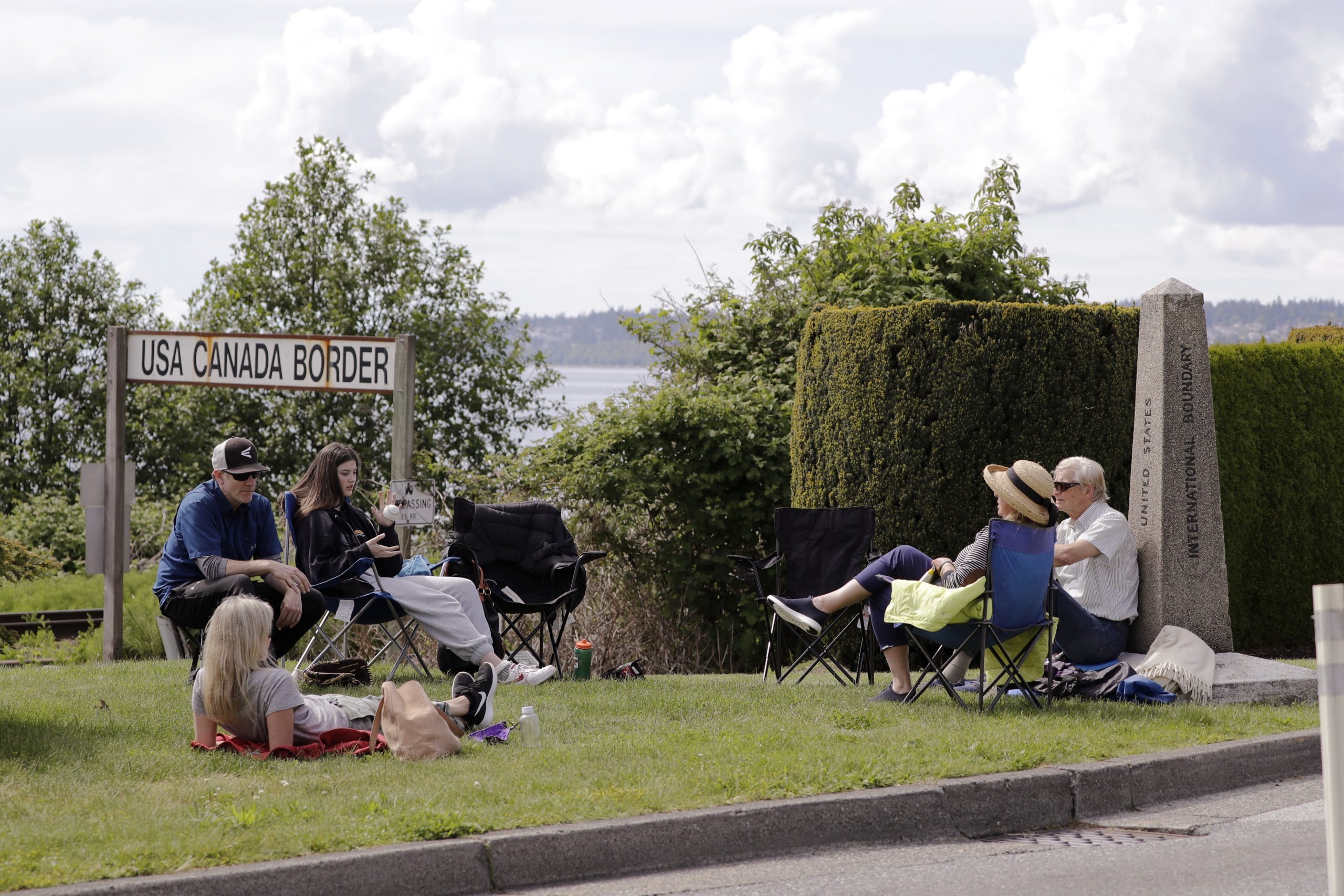
WASHINGTON — The number of incoming visitors to Canada has been gradually increasing in the days since travel restrictions began easing for fully vaccinated, eligible travellers — and the country’s border agents are expecting more this weekend.
The Canada Border Services Agency says incoming traffic last week increased about 25 per cent after quarantine rules were waived Monday for fully vaccinated Canadians, permanent residents and others already allowed to cross the border.
But despite the agency’s best efforts to publicize the requirements, roughly half of the people seeking the exemption had to be turned away, said Denis Vinette, vice-president of the agency’s travellers branch.
“It’s a question, I think, of folks not understanding the rules,” Vinette said in an interview.
Only Canadian citizens, permanent residents and eligible foreign nationals who have gone two weeks since a full course of one of the four COVID-19 vaccines approved by Health Canada — Pfizer-BioNTech, Moderna, Oxford-AstraZeneca or Johnson & Johnson — are exempt from quarantine.
Canada has exceptions in place for foreign nationals who are immediate family members of a Canadian citizen or permanent resident, as well as a process to allow extended family members and international students to apply for entry.
Of those who were denied the exemption last week, most had either had only one dose of a two-dose vaccine, had not waited the requisite 14 days after their last shot or had received a vaccine not cleared for use in Canada, Vinette said.
“The big thing for folks to understand is what qualifies as a fully exempted traveller under Canada’s definition,” Vinette said in an interview Friday.
“It is about having had one of the four Health Canada vaccines. It’s about having had the full regimens, or both shots, and having had 14 days pass after your second shot.”
Travellers are also required to use the ArriveCAN app or online portal to submit their vaccine information and the results of a negative COVID-19 test taken no more than three days before departure.
Air Canada and WestJet are also helping to promote the rules with signage in airports, and airport authorities and provincial public health agencies are also doing their part, Vinette said.
The agency is anxious to make sure people understand what has changed and what has not in order to prevent excessive delays or tie-ups at border control points, he added.
He said the delays have not been extensive, except for at busy border crossings like Windsor-Detroit, Fort Erie, Ont., and the Pacific Highway crossing in B.C., where peak wait times were sometimes close to 45 minutes.
That could be changing this weekend.
“We ask people to be patient at the border if they find that there are long lineups and folks coming in for the weekend,” Vinette said.
“It’s our first test, if you will, especially in the land border environment.”
The ArriveCAN portal can be accessed either via the Apple or Android app or online via the federal government’s website at canada.ca. Travellers must use the latest version of the app, which was updated when the rules changed.
As for when the restrictions will be relaxed further, that remains an open question.
Prime Minister Justin Trudeau said Thursday he has no intention of jeopardizing Canada’s recovery from the pandemic by prematurely opening the border. He said the next step would be easing the restrictions on fully vaccinated travellers who aren’t Canadian, but didn’t say when that might happen.
South of the border, patience for the return of Canadian visitors has been running low.
Senate Majority Leader Chuck Schumer, who represents the border state of New York, urged the two countries to come up with a mutual plan to reopen the border as soon as possible _ and failing that, for the U.S. to take unilateral action.
“If an agreement cannot be reached, the United States must do two things,” Schumer said in a statement last week.
“Expand the definition of essential travel to include vaccinated Canadian citizens with family, property, educational, medical, or business interests (in the U.S.), and unilaterally open the northern border to those vaccinated Canadians.”
This report by The Canadian Press was first published July 11, 2021.
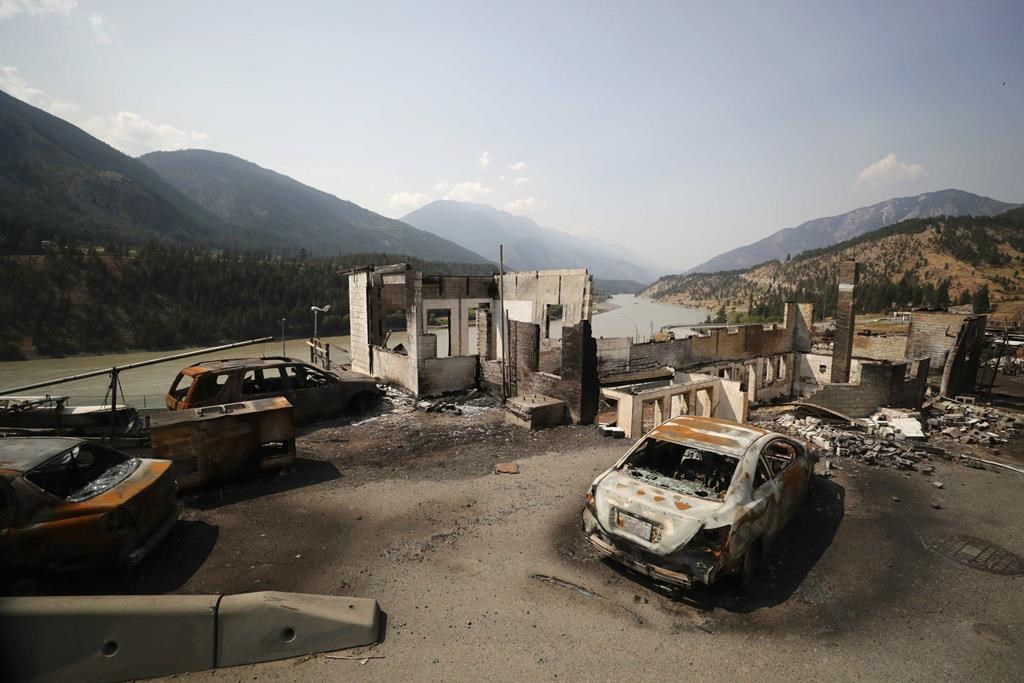
RCMP have set up three security checkpoints around Lytton, B.C., and they say there will be an update soon on the investigation into the cause of the fast-moving wildfire that destroyed most of the village.
Supt. Ray Carfantan said that in addition to the checkpoints, roving patrols are ensuring crews can gain access to restore services in Lytton, including hydro and phone lines, while people who are not required to be there are kept out.
Carfantan told a news conference Sunday that 911 service is now available and the former non-emergency number for the RCMP has been rerouted to Lillooet, about 60 km northwest of the community.
He said police have followed up on more than 15 missing-person reports since the fire on June 30 killed two people, but everyone from in and around the town in the Fraser Canyon was located and is safe.
“We are aware of the possibility that there could be someone still left unaccounted for, and therefore if you have not been able to find a loved one please call or attend your local or nearest RCMP detachment to report that person as missing.”
Carfantan said police and multiple agencies including the BC Wildfire Service, Transport Canada and the Transportation Safety Board are gathering information and evidence to try and determine the cause of the fire.
“We are committed to providing a more full update about the investigation in the next day or two,” he said.
Hot and dry conditions are persisting in parts of southern British Columbia while cooler temperatures are helping crews suppress wildfires in the north.
Fire information officer Taylor Colman of the BC Wildfire Service said 67 fires were classified as out of control on Sunday, but crews had not yet been able to evaluate the newest ones.
Colman said 306 fires were burning across B.C., most of them in the Kamloops and Cariboo fire centres.
The Sparks Lake fire, in the Kamloops fire centre, was the largest in the province at 402 square kilometres, but people were not at risk in the rural area.
On Sunday, 132 addresses in the Whitecroft community near Sun Peaks Mountain Resort Municipality were evacuated due to the Embleton Mountain fire which covered about 1.5 square kilometres. The resort community of Sun Peaks was also placed under an evacuation alert and visitors were asked to stay away.
Brandi Schier, a spokeswoman for the municipality’s emergency operations centre, said firefighters from the resort town were helping crews from the BC Wildfire Service battle the blaze.
The Thompson-Nicola Regional District, meanwhile, issued an evacuation alert for residents of nearby Heffley Lake, and Schier said that covered 156 addresses.
Schier said only residents were being permitted to enter the popular tourist destination.
“We’re just asking that people put a pause on those plans right while the situation is taken care of,” she said.
BC Wildfire Service information officer Noelle Kekula said crews battling a wildfire near the Okanagan community of Vernon had to deal with drones in the area on Saturday, forcing them to shut down operations for two hours.
“I know everyone’s curious and everyone has drones, but it’s illegal to operate a drone in and around a wildfire,” she said.
“Please keep your drones off our wildfires because it has significant impact to firefighting efforts.”
Colman said so far this season, lightning has sparked 42 per cent of fires while 40 per cent of them have been caused by humans. The rest are still being investigated.
The federal and provincial governments said Sunday they will match every dollar donated to the Canadian Red Cross for people affected by the wildfires, which they said means a $1 donation will become a $3 donation. The matching donations will be retroactive to include those received since July 3, when the Red Cross BC Wildfire Appeal fund began.

The City of Toronto has launched a campaign to help encourage a safe return to offices in the downtown core.
In partnership with the Toronto Region Board of Trade, the city released “playbooks” this week that offer reopening strategies for businesses that have had employees largely working from home during the pandemic.
“It’s not just a plan, not just a challenge, but a necessity that we get Toronto reopened in full,” Toronto Mayor John Tory said in detailing the campaign.
“We asked businesses to answer the call of sacrifices and they did … and now it’s a call to make sure we can reopen but at the same time keep people safe.”
The city issued its playbooks for the downtown financial district, as well as a hub around the Pearson International Airport and the Scarborough Centre in the city’s east end.
The documents include best practices for sanitizing and co-ordinating physical distancing in elevators and lobbies, among other things.
Recommendations for the financial district include smaller elevator capacities and the staggering of work hours to reduce crowding.
Small and medium-sized businesses in certain areas will also be given access to free COVID-19 screening kits as part of the campaign.
The campaign comes as public health officials and the province continue to ask employers to have employees work from home where possible.
But Tory said the time is fast approaching when tens of thousands of workers will return to the city’s office towers, which saw a mass exodus of employees when the pandemic hit.
According to the campaign – dubbed We’re Ready Toronto – about 118,000 people worked in the financial district before the pandemic hit, and 85 per cent of those were able to work remotely. Bringing that workforce back to office towers will help nearly 2,400 small businesses in the district recover, it said.
Shraddha Khirwadkar, a research assistant at the Peter Gilgan Centre for Research and Learning at Sick Kids Hospital, has been working in-person downtown for several months.
“It’s not how it used to be. Restrictions mean you have to wear a mask in the office at all times, and there are designated spaces to eat and work,” Khirwadkar said Thursday.
“I guess you have fewer opportunities to bond with your colleagues at the water cooler.”
The head of the Toronto Region Board of Trade said the campaign to urge a return to offices isn’t just about preventing another lockdown but “creating excitement and momentum” about workers coming back to downtown.
Board of trade CEO Janet De Silva said that while some workers could be assigned a “hybrid model” that involves working from home on a part-time basis, that shift likely won’t be permanent.
She added that provincial and federal governments will need to co-ordinate to develop guidance for international events and business-related tourism.
“I think tremendous work has been done by all three levels of government but what’s important right now is setting the stage for what reopening will look like,” she said.
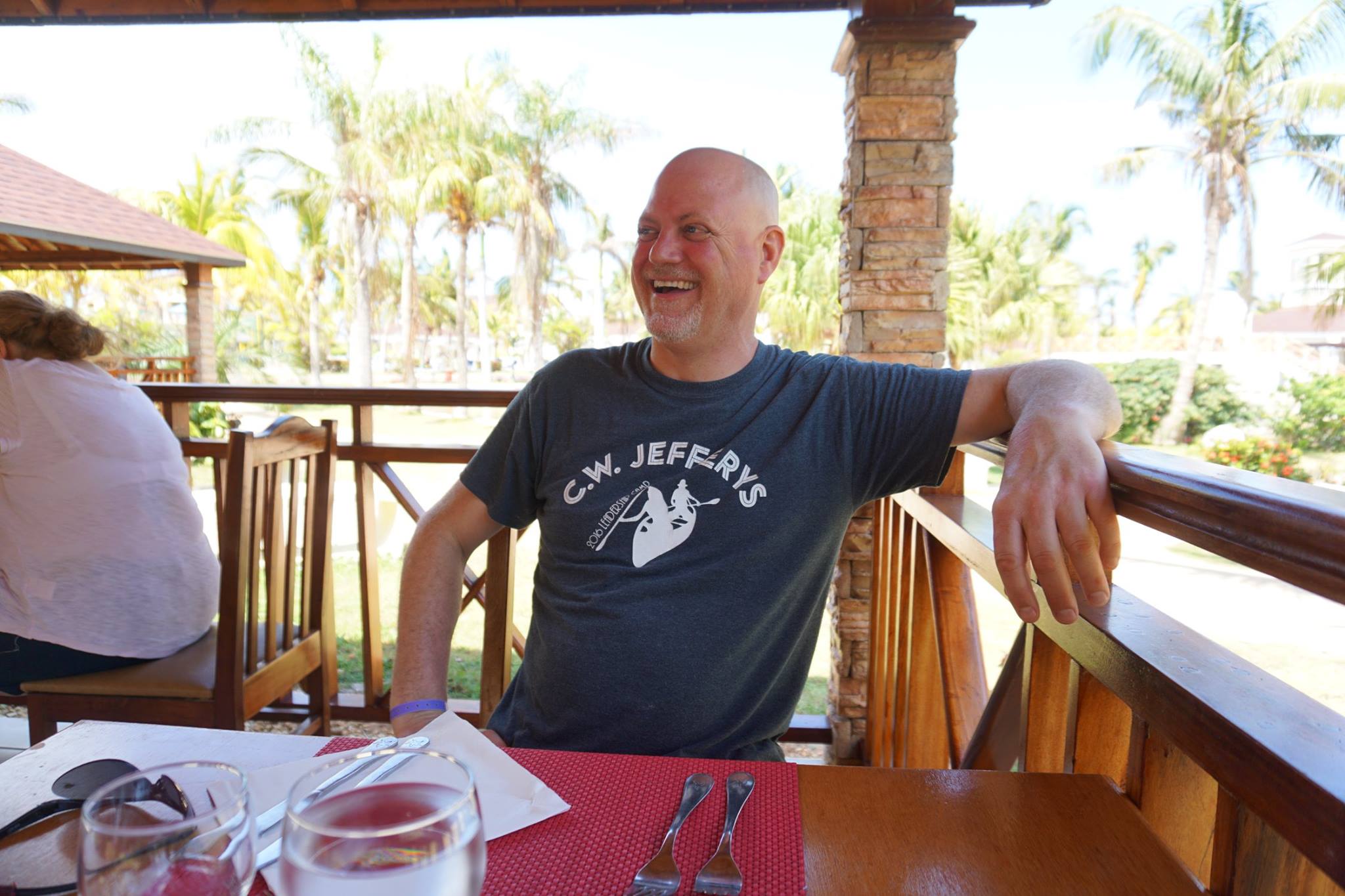
Prosecutors are expected to lay out their case Friday against a Toronto teacher accused in the drowning of a student on a high school canoe trip.
Closing submissions in the case of Nicholas Mills began Thursday, with the defence arguing his conduct did not meet the threshold for a criminal conviction.
Mills has pleaded not guilty to criminal negligence causing death in the July 4, 2017, drowning of 15-year-old Jeremiah Perry.
The Crown alleges Mills ignored safety rules in planning and carrying out the trip, including in allowing Perry — who it alleges could not swim — to go in the water without a life jacket.
In its submissions Thursday, the defence disputed the allegation that Perry could not swim, saying he would not otherwise have been able to reach the area where he drowned.
Defence lawyer Phil Campbell also argued Mills’s conduct should not be measured against the best practices of experts, but rather what would be reasonable for the “average parent.”
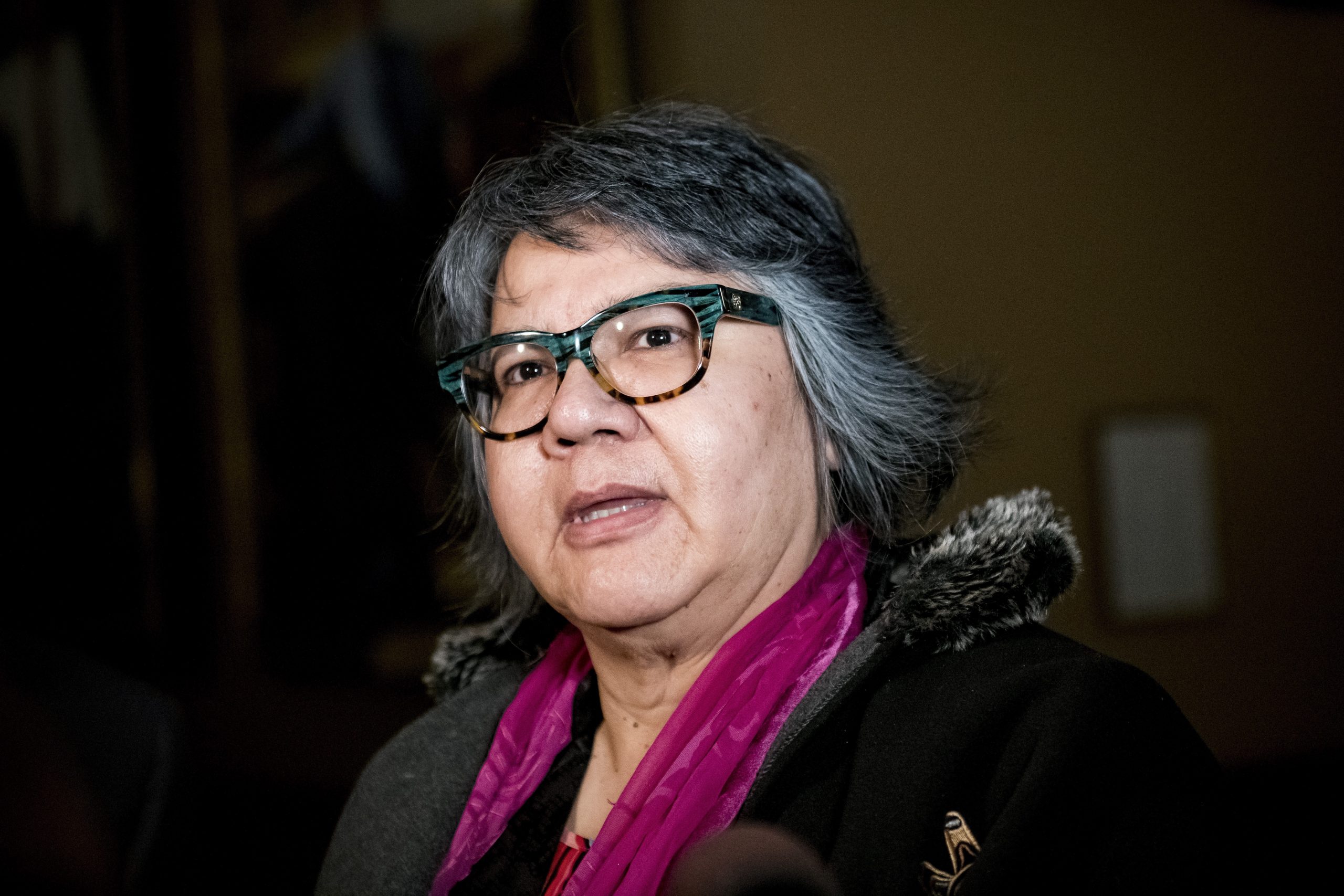
RoseAnne Archibald of the Taykwa Tagamou Nation in Ontario has become the first woman to serve as national chief of the Assembly of First Nations.
“The AFN has made her-story today,” she said Thursday, using a play on words to outline the historic win.
“Today is a victory, and you can tell all the women in your life that the glass ceiling has been broken. And I thank all of the women who touched that ceiling before me and made it crack. You are an inspiration to me.”
Archibald secured victory after her rival, Reginald Bellerose, who has been serving as Chief of Muskowekwan First Nation in Saskatchewan for the last 17 years, conceded.
The election had stretched to a second day and went to a fifth round of voting after neither Archibald nor Bellerose received the necessary 60 per cent of votes to win.
That remained the case when the AFN announced the fifth-ballot results Thursday evening, but Bellerose then withdrew from the race before a sixth round of voting could begin.
In an effort to unify the organization, Archibald made a point in her speech to reach out to the seven candidates who ran against her for the job. The AFN represents 634 First Nations with 900,000 members.
Describing them as akin to “competitive siblings,” she called the other candidates brave and applauded them for wanting to serve their communities and First Nations across the country.
She also thanked all the chiefs who voted in the AFN election, even those who did not vote for her, saying she has learned from their guidance and ideas.
“While there are things and differences that divide us, there is much that we share,” she said.
“We all want our children to grow up proud and surrounded by love, culture, ceremony and language and safe and vibrant communities. We want a mother earth for them that is not threatened by wildfires and climate change and wildfires and a warming planet. We want to be good ancestors and leave a strong legacy for the seven generations ahead.”
Archibald, who previously served as regional chief for Ontario, has been involved in First Nations politics for 31 years. She was the first woman and youngest chief elected to represent her home nation at 23 and went on to become the first woman and youngest deputy Grand Chief for Nishnawbe-Aski Nation in Ontario.
She campaigned on a platform to build a solid post-pandemic recovery plan for First Nations, to increase the involvement of women, youth and LGBTQ and two-sprit peoples in the AFN’s political processes, and to support and co-ordinate community-driven solutions to move First Nations beyond reliance on federal dollars toward economic self-sufficiency.
Archibald has also pledged to work with governments to implement the Truth and Reconciliation Commission’s 94 calls to action, with specific goals of creating community-driven solutions for healing, similar to the former ‘Aboriginal Healing Foundation’ and to work with nations and survivors to establish memorials to those lost to residential schools.
“With the recent discovery and recovery of our little ones across this country, we are all awake ? and what people need to understand and what people need to come to terms with is how settler Canadians have benefited from these colonial practices and how we, as Indigenous people, have been the target of genocide,” she said.
“We are going to stare this straight in the face and kick colonial policies to the curb. Change is happening.”
In his concession speech, Bellerose said he felt the tide was against him because the AFN chiefs had decided against two back-to-back leaders from Saskatchewan.
Outgoing national chief Perry Bellegarde is from Little Black Bear First Nation in the southern part of the province.
While he admitted he is disappointed, Bellerose also made a point to say he ran a clean campaign, making veiled references to social media posts and comments by other chiefs that may have suggested otherwise.
“I would encourage the chiefs on a go-forward basis that whatever we’re going to do on renewal, whatever we’re going to do in restructuring, let’s add some stability to the election,” Bellerose said.
“Let’s put some criteria on social media, let’s put some criteria on how candidates conduct themselves. That way when people say the AFN chief is irrelevant, no it’s not. It’s ethical, it’s strong, it’s fair.”
